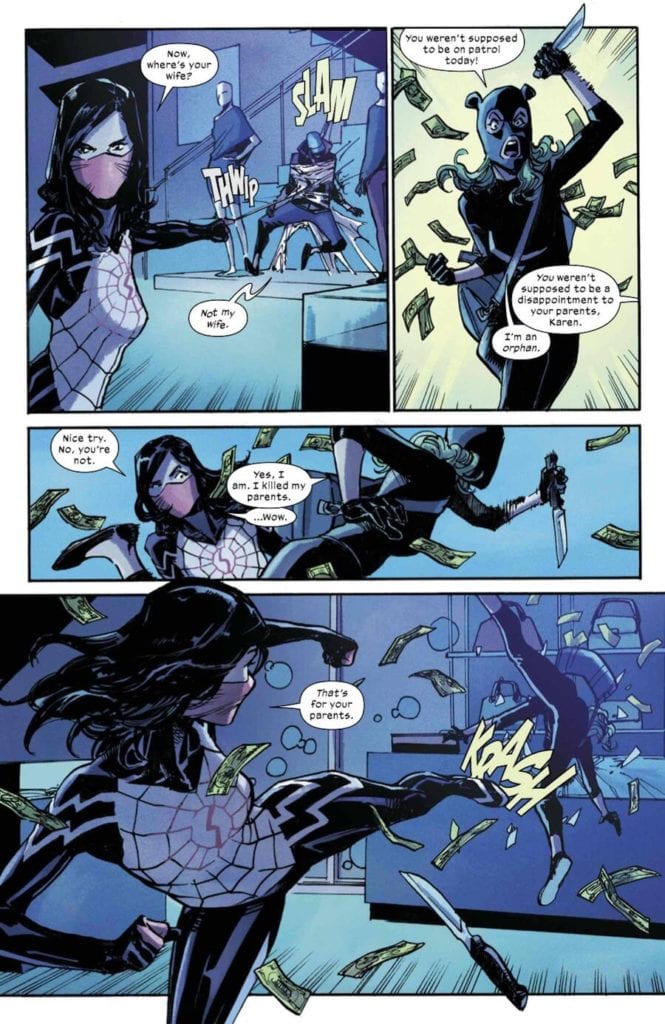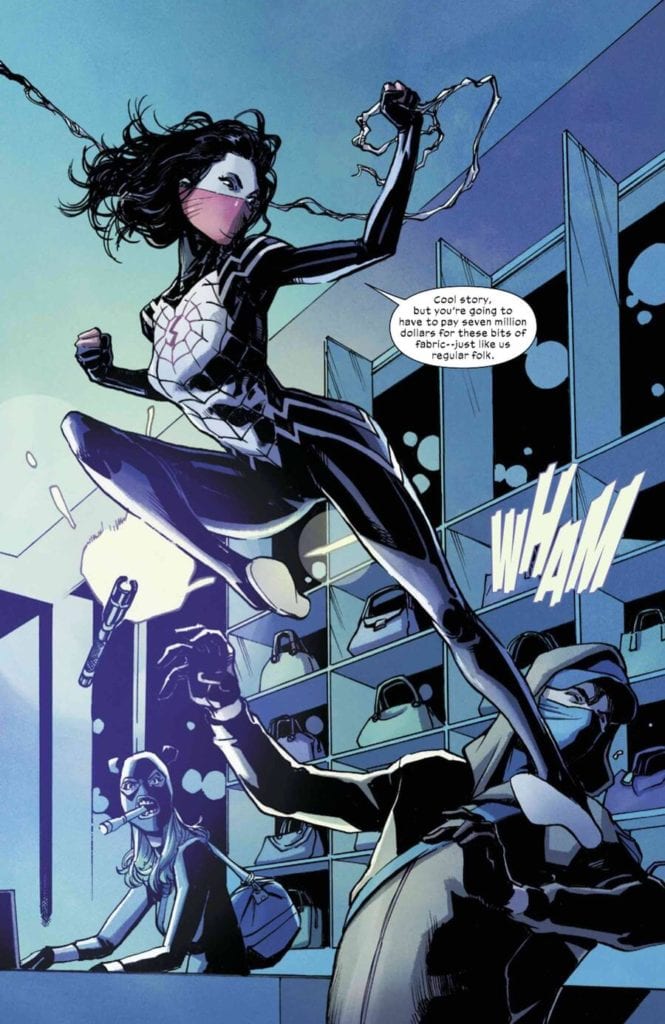In Marvel Comics’ Silk #1, on sale March 31, Cindy Moon proudly steps into the spotlight. With writer Maurene Goo and artist Takeshi Miyazawa at the helm, an underrated Spider-Verse member is poised to become a breakout star after this captivating launch. Goo gives Moon a personality that packs as much wit as you’d expect from Spider-Man himself. Plus, Miyazawa and color artist Ian Herring’s cinematic action shots turn this issue into a strong introduction for what should become a can’t-miss series. Finally, letterer Ariana Maher subtly brings each character’s voice to life, making every scene feel dynamic and life-like.
If you’re unfamiliar with Cindy, you’ll fall in love with her by the end of this first issue. She’s wonderfully sassy, and Goo’s script gives her several Peter Parker-like quips that hit home. Cindy’s spunk is immediately evident in the opening scene as, much like Spider-Man, she delivers some zingers while she stops a bank robbery. In one line, she hits a home run by telling one of the would-be crooks that she’s a disappointment to her parents. Goo captures the essence of Spidey and twists it so that Cindy’s character stands on its own.

As fun as the opening scene is, the heart of the issue comes at Cindy’s day job, where she’s a budding journalist working under J. Jonah Jameson’s tutelage at Threats & Menaces. Jameson’s presence firmly ties the book to the Spider-Man mythos, giving casual fans something to latch onto, but his relationship with Cindy becomes a vital part of the story. Goo smoothly establishes a cute dynamic between the two, as the senior Jonah bonds with Cindy over their affinity for antiquated technology and good old-fashioned journalism. It’ll be fascinating to see how this relationship progresses throughout the series, especially if/when Jonah finds out about Cindy’s crime-fighting exploits.
Like you might expect in any story that involves a reporter, Silk #1 centers around a mysterious crime. In this case, it’s a gangland killing that leaves Cindy half-joking that werewolves might be involved. Miyazawa and Herring depict the scene of the carnage by leaning into the horror, with blood splattered all over the wall and gory shots of the victims themselves. This scene illustrates the brutality of the crime, but one small yet crucial detail comes when Cindy returns to her office.

Though it might sound obvious, Goo and the art team make Cindy feel like an actual journalist. But when Miyazawa actually shows Cindy drafting up an article, this story clarifies that the character’s day job is just as important as her status as a superhero. The action shots of Silk slinging into action in full-page spreads are nice, but this little detail hammers in the fact that Cindy, much like the original Spider-Man, is essentially an everyman who’s trying to do the right thing.
Likewise, the creative team makes Cindy feel relatable when she makes a mistake. Maher’s lettering shows her inner monologue criticizing her carelessness in one seemingly harmless moment that sets off a dramatic chain reaction. In a nutshell, the whole team works together to make Cindy likable and remarkably human.
Silk #1 is the perfect jumping-on point because it establishes Cindy’s character, offers some typical superhero crime-fighting, and drops a few breadcrumbs for a compelling mystery. Hardcore Spider-Man readers and casual Marvel fans alike should check out this issue.

